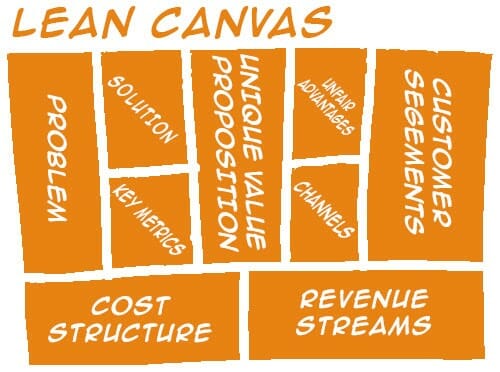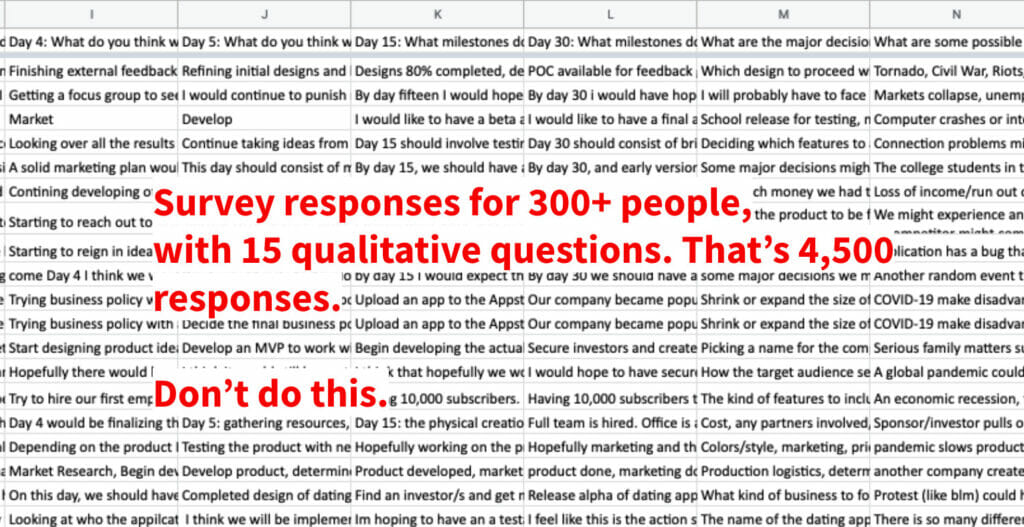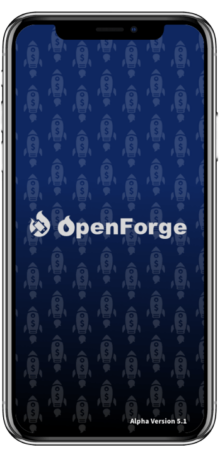If you’re a mobile app developer, one of your goals is likely to make your app accessible and easy to use. But how can you ensure that your app is accessible and easy? User feedback can give you objective insight into if your team is developing the app in the right direction. Who better to ask if your app is user-friendly than people within your target audience? Whether you are working with users, customers, or clients, there’s something in this article for you!
What is User Feedback?
Who's Your Target Audience?
Knowing your target audience, and I cannot stress this enough, is integral to the success of your app or product. It is foundational to a LEAN canvas and can help you hone in on a niche market. You can’t solve everything on your own, especially if you’re developing something for someone else. Stop overthinking it and get an outside opinion. What do you need feedback on? What are you struggling with? Make a list.

Who are your users? Ask some preliminary questions to ensure that your respondents fit into your desired user category and use those questions for part one of your survey. If you don’t know who your users are yet, it might be time to do some research into your competitors target market, demographics, and unique value propositions. Whether your product is still in the prototyping phase, in feature development, or already released, you can and should always ask for feedback! Feedback is key to a product’s success – but that all depends on what you do with it.
Compile a list of potential respondents. This can be people from your own personal network so long as that aligns with your target demographic. The best way to get valuable user feedback is to seek out people you don’t know, since they are more likely to give unbiased feedback. Some more ideas of where to find users – out in public, a focus group, at a local shop, or in a classroom setting are all places to get new potential users. Remember: a larger sample size gives you a lot more data points to work with and see trends in requested features. The more respondents you can get, the more unique perspectives you have, the better feedback you’ll get!

Create an "Ideal Client" Profile
If you don’t know who your app or product is for, the sooner you can narrow that down, the better. It can help to create an “ideal client profile” – and this requires some imagination – who is the exact person you want to be using your app or product? Here are some questions you can ask yourself:
1. What are this person’s hobbies, personality, and interests?
2. What does this person do for a living?
3. Who is this person’s family?
4. What is this person’s socioeconomic status?
5. What is this person’s age, gender, and location?

Qualitative vs. Quantitative Feedback - What To Ask And How To Ask It!
After collecting demographic information, create a second set of questions and provide your respondents with access to the project, whether it is a prototype or link to a build. Make sure they have clear instructions to access it.
“Survey fatigue” is when a respondent gets burnt out, bored, or overwhelmed from answering too many questions. It is the result of too many open-ended questions and trying to get too much feedback in one session. Make sure your questions are specific and succinct. When you create a survey, please consider these different types of feedback.
“Qualitative” feedback is feedback that can be described with words, usually with a type-in field. A qualitative question will often begin with “how…” or “what…” and gives respondents the chance to explain their reasoning. While qualitative questions are a great opportunity to get insight into your prototype’s quality, if you ask too many qualitative questions in your survey, you will never have enough time to read through the answers.


Something to keep in mind – you can ask the SAME question qualitatively or quantitatively – it’s all in the phrasing. It’s important to know what you need feedback on. What do you need to know? Let’s say you’re designing a dating app for Philadelphians and need to know how far your respondents are from the city itself. You could ask:
1. Where do you live? [Open-ended response] OR
2. How far from Philadelphia do you live?
A. Less than 5 miles
B. 5-10 miles
C. 10+ miles
Question #1 is a qualitative question. If you knew nothing about the Philadelphia area, you might need to research where Norristown or Upper Darby is, and how far it is from your intended user base. That is a LOT of extra work on your part, just for one question. Question #2 is a quantitative question. It gives you a numerical insight on how far your respondents live from the target location. When you ask quantitative questions, it gives you a chance to challenge your assumptions. Maybe you thought most respondents would be within 5 miles of the city, but 75% answered 5-10 miles. The downside of quantitative questions is that while you can collect the data, you cannot see WHY.
When you create a survey, try to keep it to 80-90% quantitative questions and 10-20% qualitative questions. This gives you the opportunity to collect many data points, pivot your direction, and avoids respondents from getting “survey fatigued”. It can be challenging to attach numbers to abstract ideas, but it’s integral to see growth and I know you can do it.
Be Considerate of Your Users and Respondents
When creating a user feedback survey, be considerate of your users’ time. Consideration comes in many forms. If generous people volunteer their time or are doing you a favor, be considerate and track the average time it takes to:
1. Test the prototype.
2. Take the survey.
The next time someone comes to test your prototype, you can set up an expectation it will be 15 minutes to go through the whole process. Knowing the time commitment is a great way to encourage new people to try your prototype, especially strangers! Another form of consideration is to offer your users an incentive to try your prototype. Incentives can include:
1. Money or gift cards
2. Extra credit points (students)
3. Giveaways, such as t-shirts, stickers, USBs, etc.
Being considerate may also be in the nature of the prototype itself, especially if it serves a greater purpose. You, as the prototype maker, may only be looking for feedback and can offer your goods or services for “free” in exchange for valuable information that you can use to better your prototype. An educator, who is desperately trying to engage her students in online learning courses, may be more open to experimenting online digital tools and games with her students. In this exchange, the maker of an educational app can test the effectiveness of the app, the educator can take steps to engage her students, and both the students and educators can provide valuable feedback so that you can improve the prototype.
In short, be considerate of your users’ time, wants, and needs, and come up with creative solutions to work out a valuable exchange for both you and them!

Sh*t Happens: When to Ignore or Limit User Feedback
Sh*t happens. A client is late. A vendor’s website goes down. The box factory got lit on fire. We don’t always meet our own personal deadlines, but no matter what is happening internally, when you set up expectations for users, they will be waiting whether you have the product or not. When presented with a sticky situation, focus on what you do have, not what is “supposed to be there”. Sometimes your only choice is to roll with it. In situations like these, it’s important to acknowledge where the users expectations are in the user feedback process – is this their first time seeing the app? Is this their first time interacting with your company? Have they already seen promotional material for your app?
Some users will come into your app with expectations, and others will come in fresh. It’s important to focus on the feedback you do want – just be aware and upfront if the app is not where you want it to be. “There is a bug that causes this button not to work, please try to focus on how the colors make you feel”. Depending on the situation and expectations set up from the get go, some customers won’t be able to move past the mistakes – don’t take it personally. A t-shirt company may specialize in rush deliveries and can deliver the best quality t-shirt on the planet, but if the expectation is set up that it will be on time, even if a snowstorm delays shipping, it may be the only thing the customer can focus on. Sometimes user feedback is not useful or helpful to what you’re trying to accomplish. Filter out respondents that do not fit the qualifications for your user group. Take ownership of your mistakes and how you have set up user expectations better for next time. Learn. Rinse. Repeat.


